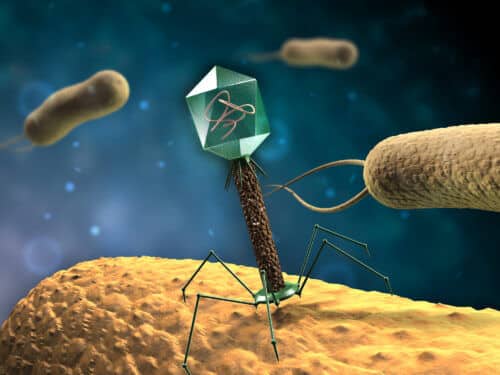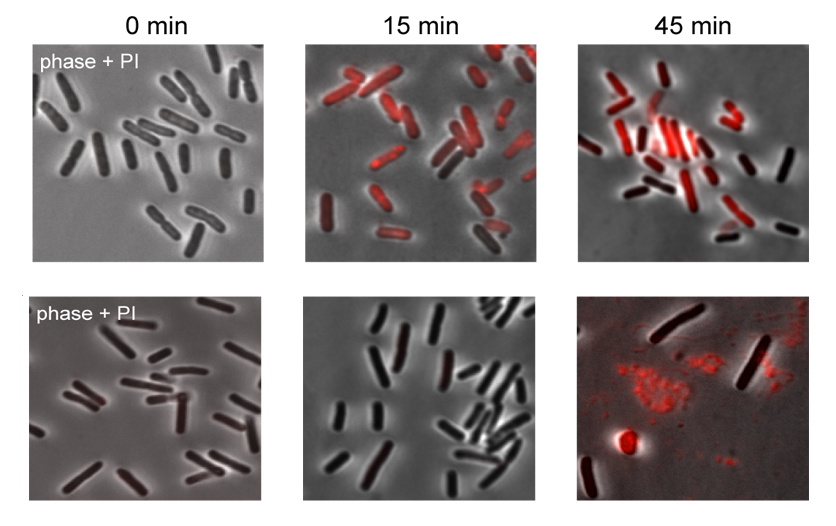Besides solving a 36-year-old mystery, Weizmann Institute of Science scientists have identified thousands of types of these components, which may be used in gene editing

Mysterious molecules, hybrids that are half RNA and half DNA, were discovered in bacteria 36 years ago, but despite the extensive research devoted to them - until now the role of these strange components called retrons has not been discovered. in the article published today in the scientific journal Cell, Weizmann Institute of Science scientists report on the solution to the mystery: the retrotrons are part of the bacteria's immune system and are a last line of defense aimed at preventing the spread of viral infection to the entire colony. Besides revealing a new mechanism of bacteria to protect against viral infections - a mechanism reminiscent of a very similar strategy in plants - the study discovered thousands of new retrons that may enrich the genetic editing toolbox.
the laboratory of Prof. Rotem whistles In the department of molecular genetics at the institute, he specializes in bacterial defense strategies. The purpose of the current study, which was led by research students Adi Millman and Abigail Stocker-Avihil, along with postdoctoral researcher Dr. Ode Bernheim, was not to solve the retrotron mystery - in Prof. Shurk's laboratory they were busy searching for new components of the immune system of bacteria , especially those that help them fight off viruses. This search has become easier and simpler recently, as they discovered that genes of the immune system tend to cluster in "defense islands" in the bacterial genome. Therefore, when the researchers identified the unique fingerprint of the retrotron in such a defenseless island, they decided to get to the root of the matter.

A preliminary test revealed that the retrotron they identified is indeed involved in protecting bacteria from phages - viruses that specialize in infecting bacteria. When the researchers closely examined additional retrons that are also located near the genes associated with the bacterium's immune system, they discovered that these regions of the genome are always connected - physically and functionally - to another gene; When the accessory gene or retrotron was mutated, the bacteria's ability to fight viral infections was impaired. These findings led the researchers to look for additional complexes of retrons in the defense islands. In the end, they were able to identify about 5,000 retrons in different defense islands of many bacterial species, many of which were previously unknown.
To test whether the protective action is a general characteristic of these hybrids, the researchers implanted many retrons, each in turn, into retron-free laboratory bacteria. As suspected, the retrotrons did protect the bacteria from viral infections.
To understand the details of the defense mechanism, the researchers focused on a particular retrotron and tracked its actions - they were surprised to discover that the retrotron actually causes the infected cell to commit suicide. Such altruistic suicide was once thought to be the exclusive property of multicellular organisms, but today it is known to occur in many unicellular organisms as well. This suicide is actually a kind of "doomsday weapon" whose purpose is to prevent the spread of the viral infection to the entire colony of bacteria. If the suicide mechanism works fast enough, the bacterium dies before the virus has enough time to make copies of itself and spread them to the other bacteria in the colony, thus the colony is saved.
Last line of defense
Befitting a last line of defense - the retrotron does not know how to distinguish the viruses themselves, but it is a "sentinel" that guards another component of the bacterial immune system known as RecBCD - one of the first lines of defense of bacteria against invaders. If the retrotron detects that the virus has sabotaged the cell's RecBCD, it executes - with the help of the accompanying gene - the suicide plan in order to kill the infected cell and protect the colony.
"This is a smart strategy, reminiscent of a similar mechanism in plants," says Prof. Sorek. "Viruses that attack bacteria are equipped with a variety of inhibitors that can block different components of the immune response in the bacteria. The retrotron does not need to identify all possible inhibitors, but only to 'keep an eye' on a certain immune component. Plant immune systems apply a similar method of countermeasures - they "protect" key components of the plant, and if these components are damaged by a virus or bacterium, the plant immune system sacrifices a small area of a leaf or root, in order to save the plant itself. Since most bacteria live in colonies, such a strategy promotes the survival of the group, even at the expense of individual members."
Bacteria have to constantly defend themselves against phages. The most famous immune mechanism of bacteria, CRISPR, which neutralizes phages by editing their DNA, is currently used in biological laboratories for gene editing. Only recently was it announced that the Nobel Prize in Chemistry for 2020 will be awarded to Emmanuel Charpentier and Jennifer Doudna for the discovery of this tool. However, bacteria have dozens of additional defense mechanisms - many of them were discovered in Prof. Sorek's laboratory, and some of them are already used today for genetic editing. Retrons are also used in laboratories, as researchers have learned to use them to create single-stranded DNA molecules. Prof. Sorek and his team believe that within the diverse list of retrotrons they have identified, there may be several hidden ones that may answer different and diverse needs of genetic editing.

6 תגובות
Levi Eshkol smiles
Really interesting, even though a large part is unknown to me. Thank you. I believe that the findings will be useful
very interesting. Thanks!
Sorry for the ignorance (I'm not smart) Can someone explain to me why it's good for humans?
We have nothing to do with any cameras. never was either.
When will I receive the camera I ordered or a message from you and a reference regarding my order